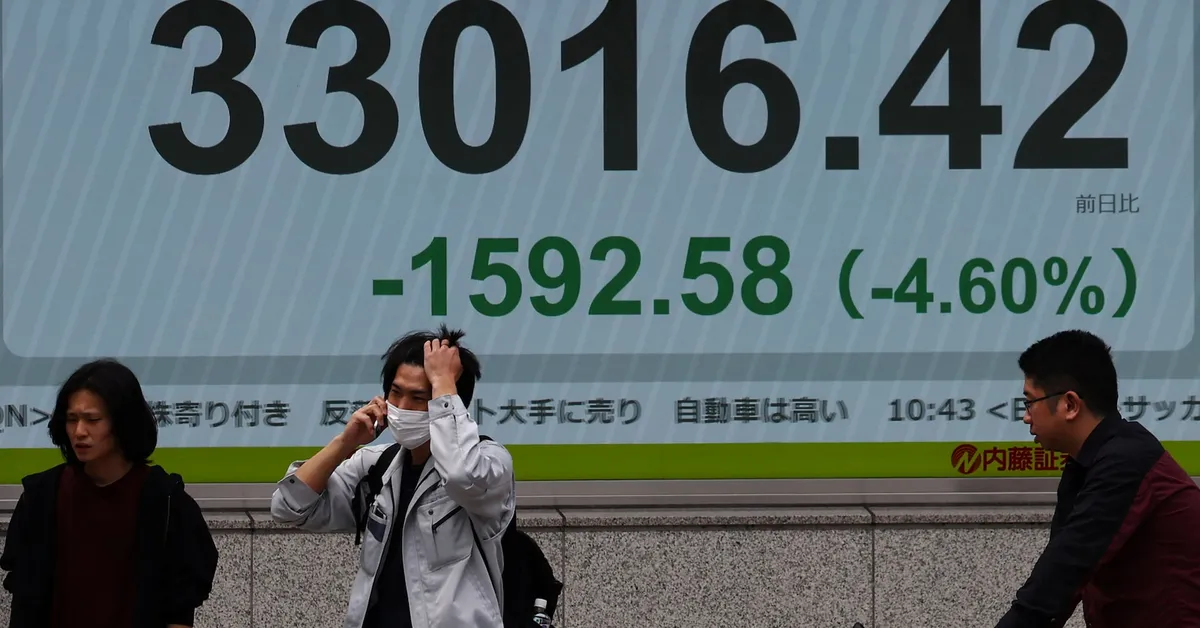
Global stocks experienced a significant downturn on Friday, April 11, as mounting fears of a looming recession gripped investors. The selloff was exacerbated by escalating tariffs between the United States and China, creating an atmosphere of uncertainty that sent U.S. assets into a tailspin. As investors sought safety, the dollar continued to decline, further intensifying concerns in the financial markets.
The recent turmoil has driven investors to seek refuge in safe haven assets. The Swiss franc surged to a ten-year high against the dollar, while gold prices reached new peaks. This relief rally followed President Donald Trump's temporary reduction of tariffs on several countries, which provided a brief respite in the otherwise turbulent market landscape.
During Asian trading hours, the selloff in U.S. Treasuries accelerated, with the yield on the 10-year note climbing to 4.475%. This marked an increase of over 40 basis points for the week, the steepest rise since 2001, according to LSEG data. Analysts suggest that this sharp decline in Treasuries and the weakening dollar reflect a significant loss of confidence in the U.S. economy. Kyle Rodda, a senior financial markets analyst at Capital.com, noted that the current situation signals an exodus from U.S. assets, indicating deeper issues than merely growth slowdown and trade uncertainty.
Investor sentiment remains shaky as concerns grow over the escalating Sino-U.S. trade war. President Trump has imposed stringent tariffs on Chinese imports, effectively raising them to 145%. In retaliation, China has increased its tariffs on U.S. goods, with fears that these could rise beyond the current 84%. James Athey, a fixed income manager at Marlborough, remarked that the market outlook is now significantly clouded with uncertainty, leaving many questions unanswered.
The U.S. dollar has faced relentless selling pressure, with traders flocking to the Japanese yen, the Swiss franc, and the euro for security. On Friday, the dollar fell to a ten-year low against the Swiss franc and a six-month low against the yen. The euro surged by 1.7% to $1.13855, a level not seen since February 2022. The dollar index, which gauges the greenback against six other currencies, dipped below 100 for the first time since July 2023, providing some relief to emerging market currencies like the Malaysian ringgit.
Markets largely disregarded data from the U.S. Labor Department that indicated a surprising drop in consumer prices for March. However, many analysts believe that this improvement in inflation is unlikely to last due to the ongoing tariff situation. The selloff in U.S. Treasuries has rekindled fears of instability in the world's largest bond market, with 30-year bond yields soaring to 4.90%—on track for their largest weekly jump since at least 1982, according to LSEG data.
In the commodities market, gold prices soared to a record high as investors sought safe haven amidst the turmoil, rising 1.25% to $3,214 per ounce. Conversely, oil prices faced a decline in early trading on Friday, following a drop of more than $2 per barrel on Thursday. U.S. West Texas Intermediate crude futures fell by 0.48%, while Brent crude futures decreased by 0.46%, reflecting the broader market instability.
In summary, the combination of escalating tariffs, declining investor confidence, and the rush into safe havens paints a grim picture for the global financial landscape. As uncertainty looms, investors remain vigilant and cautious in navigating these turbulent times.